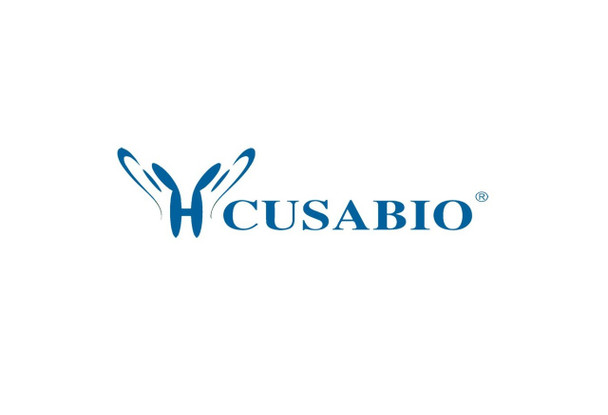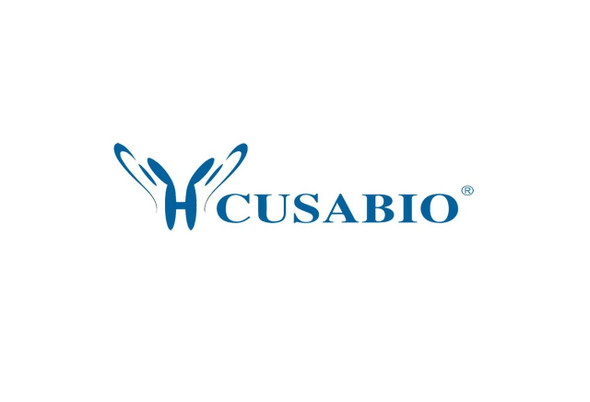Cusabio Human Recombinants
Recombinant Human Mediator of DNA damage checkpoint protein 1 (MDC1), partial | CSB-YP623929HU
- SKU:
- CSB-YP623929HU
- Availability:
- 25 - 35 Working Days
Description
Recombinant Human Mediator of DNA damage checkpoint protein 1 (MDC1), partial | CSB-YP623929HU | Cusabio
Alternative Name(s): Nuclear factor with BRCT domains 1
Gene Names: MDC1
Research Areas: Epigenetics and Nuclear Signaling
Organism: Homo sapiens (Human)
AA Sequence: APKVLFTGVVDARGERAVLALGGSLAGSAAEASHLVTDRIRRTVKFLCALGRGIPILSLDWLHQSRKAGFFLPPDEYVVTDPEQEKNFGFSLQDALSRARERRLLEGYEIYVTPGVQPPPPQMGEIISCCGGTYLPSMPRSYKPQRVVITCPQDFPHCSIPLRVGLPLLSPEFLLTGVLKQEAKPEAFVLS
Source: Yeast
Tag Info: N-terminal 6xHis-tagged
Expression Region: 1892-2082aa
Sequence Info: Partial
MW: 22.9 kDa
Purity: Greater than 90% as determined by SDS-PAGE.
Relevance: Required for checkpoint mediated cell cycle arrest in response to DNA damage within both the S phase and G2/M phases of the cell cycle. May serve as a scaffold for the recruitment of DNA repair and signal transduction proteins to discrete foci of DNA damage marked by 'Ser-139' phosphorylation of histone H2AFX. Also required for downstream events subsequent to the recruitment of these proteins. These include phosphorylation and activation of the ATM, CHEK1 and CHEK2 kinases, and stabilization of TP53 and apoptosis. ATM and CHEK2 may also be activated independently by a parallel pathway mediated by TP53BP1.
Reference: "53BP1 and NFBD1/MDC1-Nbs1 function in parallel interacting pathways activating ataxia-telangiectasia mutated (ATM) in response to DNA damage."Mochan T.A., Venere M., DiTullio R.A. Jr., Halazonetis T.D.Cancer Res. 63:8586-8591(2003).
Storage: The shelf life is related to many factors, storage state, buffer ingredients, storage temperature and the stability of the protein itself. Generally, the shelf life of liquid form is 6 months at -20?/-80?. The shelf life of lyophilized form is 12 months at -20?/-80?.
Notes: Repeated freezing and thawing is not recommended. Store working aliquots at 4? for up to one week.
Function: Required for checkpoint mediated cell cycle arrest in response to DNA damage within both the S phase and G2/M phases of the cell cycle. May serve as a scaffold for the recruitment of DNA repair and signal transduction proteins to discrete foci of DNA damage marked by 'Ser-139' phosphorylation of histone H2AFX. Also required for downstream events subsequent to the recruitment of these proteins. These include phosphorylation and activation of the ATM, CHEK1 and CHEK2 kinases, and stabilization of TP53 and apoptosis. ATM and CHEK2 may also be activated independently by a parallel pathway mediated by TP53BP1.
Involvement in disease:
Subcellular Location: Nucleus, Chromosome
Protein Families:
Tissue Specificity: Highly expressed in testis.
Paythway:
Form: Liquid or Lyophilized powder
Buffer: If the delivery form is liquid, the default storage buffer is Tris/PBS-based buffer, 5%-50% glycerol. If the delivery form is lyophilized powder, the buffer before lyophilization is Tris/PBS-based buffer, 6% Trehalose, pH 8.0.
Reconstitution: We recommend that this vial be briefly centrifuged prior to opening to bring the contents to the bottom. Please reconstitute protein in deionized sterile water to a concentration of 0.1-1.0 mg/mL.We recommend to add 5-50% of glycerol (final concentration) and aliquot for long-term storage at -20?/-80?. Our default final concentration of glycerol is 50%. Customers could use it as reference.
Uniprot ID: Q14676
HGNC Database Link: HGNC
UniGene Database Link: UniGene
KEGG Database Link: KEGG
STRING Database Link: STRING
OMIM Database Link: OMIM









